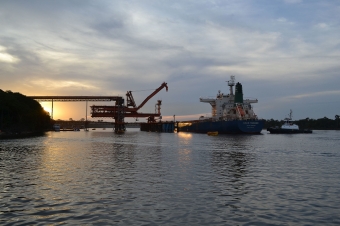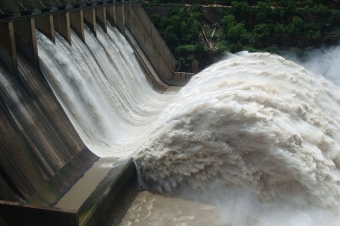Summary:
The activity focuses on the critical analysis of the dispute settlement devices from reading bilateral investment agreement (IIA) in order to differentiate the investor-state clauses and state-state in an IIA. The students were intended to become familiar with existing procedures for dispute settlement and implementation of international investment agreements. To do so, they analyze the Bolivia-Holland investment agreement, contextualizing it in the Petrobras case. This dynamics is applied after the dynamics "Petrobras Case 3 - International agreements of investment."
Objective:
- GENERAL GOAL: differentiate investor-state clause and state-state at an IIA and present the existing procedures for the implementation of IIA’s;
- SPECIFIC GOAL: lead students to reflect on dispute settlement provisions contained in two articles 9 and 13 - attachment to the Bolivia-Netherlands Agreement, bringing an overlay mechanism for resolving disputes relating to the same extent as in the case of the nationalization of Petrobras assets in 2006. How to think about this overlay? - This was the question and reflection afforded by exercise;
- It was intended that students become familiar with existing procedures for dispute settlement and implementation of international investment agreements and analyze critically.
Dynamics:
- TEACHING METHOD: Problem-Based Learning method, in which students seek solutions to a particular problem;
- REQUIREMENTS: There were previous readings, consisting of: indicated doctrine (Sornarajah). There were also additional readings to the indicated doctrine and ITA website - Investment Treaty Arbitration (accessed in 6/10/13). There were available speeches made by the Bolivian President, Mr. Evo Morales, and other document output reporting of Venezuela.
- INTRODUCTION TO THE DYNAMICS: the first 15 minutes of class, there was a brief discussion on the document based text (Sornarahaj - bibliography attached), concerning the dispute settlement contained in bilateral investment agreement;
- DEVELOPMENT OF THE DYNAMICS: as a result, the students received a printed exercise to discuss in groups and answer the questions in writing. Based on the arts. 9 and 13 of the bilateral Bolivia-Netherlands investment, they were asked to observe the overlap of dispute settlement mechanisms relating to the same extent as in the case of the nationalization of Petrobras assets in 2006. How to think this overlap? - That was the question extracted from the discussion. Duration: 45 minutes;
- END OF THE DYNAMICS: in the end of class, in 30 minutes, and after discuss with the professor the answers of the exercise, the students discussed possible impediments and measures to be initiated proceedings before the International Court of Justice where one of the parties so intended. In the final 10 minutes, the groups could complement their answers.
- ATTENTION IN THE CLASSROOM: some observations can be made from the experiences with this activity:
1) at other times, students of the 3rd year already had the specific case addressed on another perspective, in terms of contracts with another professor, which allowed students to come, already knowing the structure, and put them at question concepts that they thought were already consolidated;
2) the implementation of the exercise depended on the recovery of previously provided must read and context highlighting possible regulatory instruments to protect private investment, involving international agreements and national regulations;
3) early in the course of 2013, in which the exercise was applied again, there was a conversation to understand the profile of the group and outline what kind of dynamics works and the areas of interest of the students. Alongside the role of the professor in the broader education of the student, being a technical subject, it is important to align the profile of the class, which, in this case, influenced both the option to focus more on the private side that the public as to the choice the base material. It was identified for example, the difficulty of the class dealing with the schedule of activities outside the classroom, especially with a large volume of material, which is why it was decided by objectives texts (primary sources, primarily) and classroom answers;
4) in the application of the exercise; it is necessary to consider the limitations of foreign languages of students, because some reading of the texts indicated are in English;
5) when working with a real case such as this, there is the need to be careful with information that students bring from the media, trying to deconstruct prejudices and make them see the other side of the case;
6) it is necessary to consider the regulatory framework dating back to the case, Bolivia, under the transitional provisions of the Constitution, should review the agreement with the Netherlands from 2014. Moreover, Bolivia is in the process of accession to Mercosur linking to other investment regulations.
Evaluation:
- FEEDBACK: in the end of the lesson, all comments were made with dynamism;
- GRADE EVALUATION: evaluation of all course exercises (there are about 11) made up 30% of the final grade. A single grade was assigned to the whole group. The performance depended on exercises prior to reading the material indicated as mandatory for the class. The following criteria was used while evaluating the exercise:
1) Interpretation and application of the concepts and legal rules;
2) Articulation of ideas and interests of those involved;
3) Rationale.
- Also 10% of the final grade that was from the evaluation of participation in the classroom, also measured in this dynamics. This evaluation item had not only counted on the active but also on the passive participation in the classroom. This means that the participation evaluation was based on:
1) attention and concentration in the classroom (hear and understand the professor and classmates);
2) read the indicated texts (especially when applying the Socratic method);
3) teamwork, when applicable; and
4) contribution to the reasoning proposed by the professor to the class (including the presentation of questions and correlation of ideas);
The statement of participation allowed the professor to evaluate the student's progress in learning all the skills and competencies that discipline intended to develop the student.
Observation:
Copyright from the cover page image:
Image: "Bimboland gas refinery," provided by Wikimedia Commons user "Bellavista1957", authored the "National Iranian Oil Company (NIOC)," under license in Public Domain.





